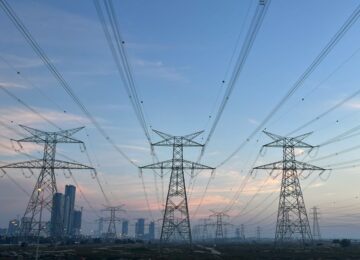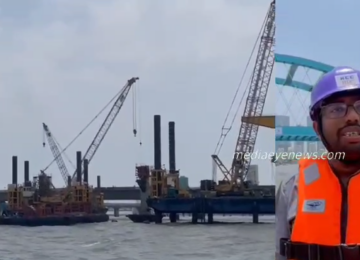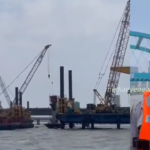Anupama Nair
www.mediaeyenews.com
In the last two-part I spoke about the Dholavira being declared as a UNESCO World Heritage Site and about Indus Valley Civilization and the two sites Harappa, Mohenjo-Daro and Ganeriwala. Here is more…
Kalibangan is an ancient site of the Indus Valley Civilization is located in Rajasthan. The site contains both pre-Harappan and Harappan remains and shows the transition between the two cultures. Although the culture before Harappa had copper and produced pottery, it had no writing system, and it’s ruins show the absence of an orderly layout we find in Indus Valley and also the use of baked brick. The Harappan remains were found to include a cemetery and a fortified citadel. Historians state “excavation here has revealed as many as nine-building phases and the citadel mound is a parallelogram on a plan of about 430 feet on the east-west axis and 850 feet on the north-south”.
“Traces of a brick wall around the lower town were also encountered. The central sector of the citadel contained a series of high brick platforms divided by narrow passages. The upper parts of these platforms had been seriously damaged, and their function is mysterious, but they do not appear to have been the foundation for a granary. The northern sector contained normal domestic housing. A cemetery was discovered a short distance to the west of the town”.
Rakhigarh in Haryana was excavated by Shri Amarendra Nath of the Archeological Survey of India. Five interconnected mounds spread in a huge area from Rakhigarhi's unique site. Two mounds, out of five, were believed to be thickly populated. It was found that the mature Harappan phase represented by a planned township having mud-brick as well as burnt-brick houses with proper drainage systems existed here. Animal sacrificial pit lined with mud-brick and triangular and circular fire alters on the mud floor have also been excavated that signified the ritual system of Harappans. “A cylindrical seal with five Harappan characters on one side and a symbol of an alligator on the other is an important find from this site”.
Other finds included “blades (terracotta and shell bangles), beads of semiprecious stones, terracotta, shell and copper objects, animal figurines, toy cart frame and wheel of terracotta, bone points. The excavations also discovered a few burial sites”.
Lothal, in Saragwala village on the bank of Sabarmati in Dholka taluka of Ahmedabad district, was one of the most prominent sites of the Indus Valley Civilization in Gujarat. Lothal is a combination of two words Loth and thal, which meant ‘the mound of the dead.’ The city was inhabited during 3700 BC and was a flourishing port. The excavation was started from 1955–1960 by the Archaeological Survey of India to excavate the ancient city. Archaeologists believe that “the city was a part of a major river system on the ancient trade route from Sindh to Saurashtra in Gujarat. Excavations here have offered the greatest number of antiquities in the archaeology of modern India. From a graveyard in Lothal, 21 human skeletons were found and foundries for making copperware were also discovered. Ornaments made of semi-precious stones, gold, etc. were also found from the site”.
Dholavira is in one of the five largest cities of the Indus Valley Civilization and is located about 250 km from Bhuj. It has two seasonal brooks, Mansar and Manhar. “The property comprises two parts, a walled city and a cemetery to its west”, stated a government release, adding that Dholavira flourished for nearly 1,500 years.
According to an Archaeological Survey of India (ASI) “excavations at the site revealed seven cultural stages documenting the rise and fall of the Indus Valley Civilization. The city, is also outstanding for its planning and architecture. The salient components of the full-grown cityscape consisted of a bipartite 'citadel', a 'middle town' and a 'lower town', two 'stadia', an 'annex', a series of reservoirs all set within an enormous fortification running on all four sides”.
“While unlike graves at the other Harappan sites, no mortal remains of humans have been discovered at Dholavira. “Memorials that contain no bones or ashes but offerings of precious stones, etc. add a new dimension to the personality of the Harappans,” said Mr. Bisht an archaeologist. He further stated “remains of a copper smelter indicate of Harappans, who lived in Dholavira, knew metallurgy. It is believed that traders of Dholavira used to source copper ore from present-day Rajasthan and Oman and UAE and export finished products. It was also a hub of manufacturing jewelry made of shells and semi-precious stones, like agate and used to export timber”.
“Beads peculiar to the Harappan workmanship have been found in the royal graves of Mesopotamia, indicating people of Dholavira used to trade with the Mesopotamians. Its decline also coincided with the collapse of Mesopotamia, indicating the integration of economies. Harappans, who were maritime people, lost a huge market, affecting the local mining, manufacturing, marketing and export businesses once Mesopotamia fell”.
Bisht said “that from 2000 BC, Dholavira entered a phase of severe aridity due to climate change and rivers like Saraswati drying up. Because of a drought-like situation, people started migrating toward the Ganges valley or towards south Gujarat and further beyond in Maharashtra. In those times, the Great Rann of Kutch, which surrounds the Khadir island on which Dholavira is located, used to be navigable, but the sea receded gradually and the Rann became a mudflat”.
The Prime Minister on hearing the news tweeted “absolutely delighted by this news. Dholavira was an important urban center and is one of our most important linkages with our past. It is a must visit, especially for those interested in history, culture and archaeology,” he wrote. In the same thread, Modi also added, “I first visited Dholavira during my student days and was mesmerized by the place. As CM of Gujarat, I had the opportunity to work on aspects relating to heritage conservation and restoration in Dholavira. Our team also worked to create tourist-friendly infrastructure there.”
The most positive news I heard was the governments of the two countries are granting visas to visit the sites of the great Indus Valley Civilization. I for one would love to pack my bags and go on a journey and travel in a time machine and see how people lived in those days.


































Great article.
Great article
Great article
Great article
Would love to see the sites
Would love to see the sites
Would love to see these places.
Would love to see these places.
Hope we would get to see this sites soon